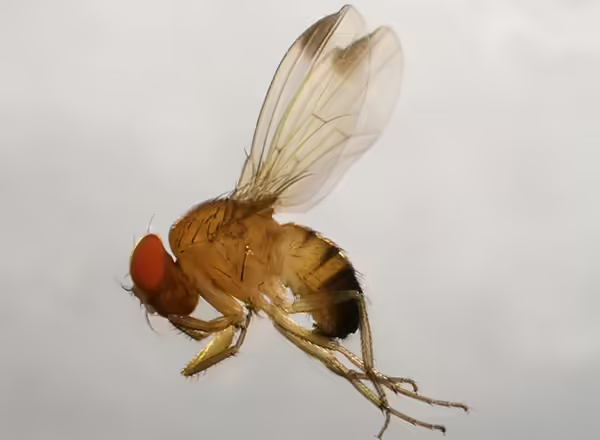Spotted wing drosophila (Drosophila suzukii) is a pest of soft fleshed fruits, mainly raspberries, blackberries, blueberries, strawberries, cherries, plums, and grapes. SWD is found across the U.S. It does not spread any diseases, but its egg laying can introduce Acetobacter, causing fruit rot. Unlike other related vinegar flies that attack small fruit, it lays its eggs in healthy, intact fruit. Most vinegar flies are attracted to overripe or spoiled fruit.

The History of Spotted wing drosophila
SWD is an invasive pest of small fruit detected in Hawaii in the 1980s and found in California in 2008. It has spread to almost every U.S. state since then with detection in Illinois in 2012. They are not very strong fliers, so their spread is likely human-mediated, commonly through transporting infested fruit.
Regulation
There are currently no regulations in place for SWD.

Adults are very small, yellow-brown flies around 2 to 3 millimeters in size. The adults have some distinctive features that differentiate them from other similar vinegar flies. The males have a dark spot on the leading wing edge and the females have a large, serrated egg laying device, or ovipositor. Flies can lay up to 25 eggs a day.
The larvae, or maggots, are 1 to 4 millimeters long and white. As maggots, they do not have legs or an obvious head. The maggots feed inside fruit causing brown, discolored, and sunken areas. Development depends on temperature and the larvae take 11 to 80 days to complete development and have up to 10 generations per year. They overwinter as adults.
SWD adult traps are commercially available from several sources. You can also build homemade traps. Additionally, sampling for larvae can occur by picking at least 15 ripe fruits in a plastic bag and covering them with a strong salt solution. Squeeze each fruit and then wait 30 minutes for any small white larvae to emerge. The presence of SWD in the traps is the threshold for control.
There are several conventional insecticides labeled for SWD control. Always read the insecticide label before use. Good sanitation is key to controlling SWD. Always remove and destroy infested or fallen fruit. An effective control strategy is the use of floating row covers with an 80-gram insect netting.